143 posts
Latest Posts by astrosciencechick - Page 2

Chandra/Hubble/Spitzer X-Ray/Visible/Infrared Image of M82.
Credit: NASA, ESA, CXC and JPL-Caltech
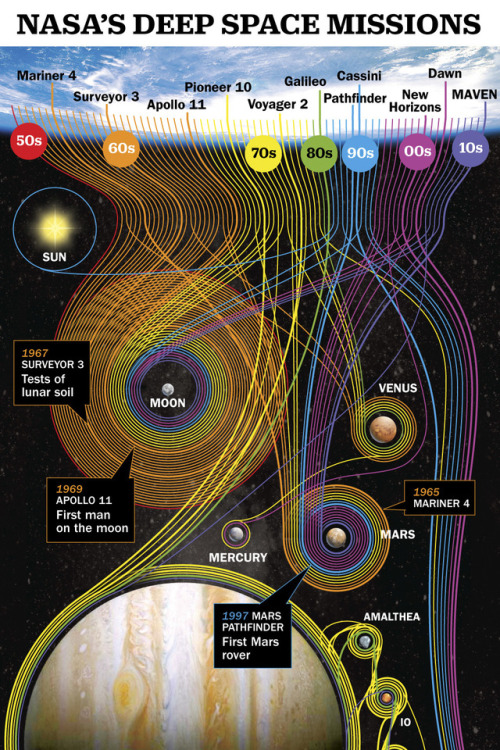
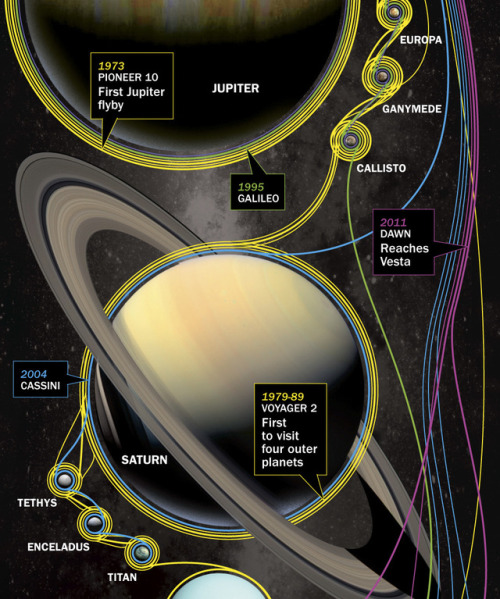
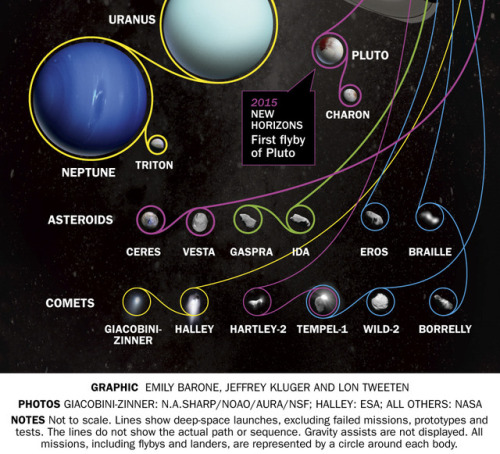
Deep Space Missions

As of right now (November 2, 9:21 UTC), the International Space Station has been continuously staffed for 18 years!
That means that if you’re not legally an adult, there’s been humans living & working in space for your entire life! That’s WILD


Cygnus Shell Supernova Remnant W63 via NASA https://ift.tt/2znmGCd
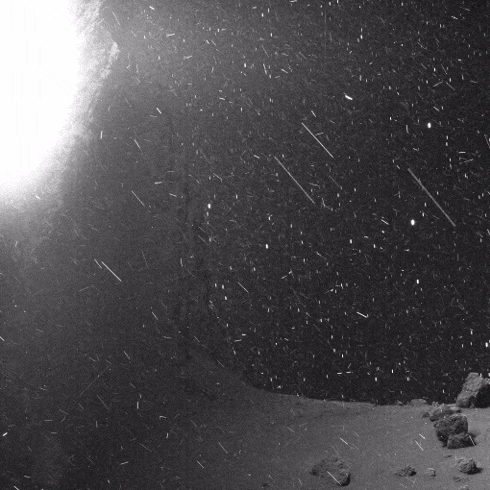
VIDEO FROM THE SURFACE OF A COMET
This is truly incredible.
Details:
Remember Rosetta? That comet-chasing European Space Agency (ESA) probe that deployed (and accidentally bounced) its lander Philae on the surface of Comet 67P? This GIF is made up of images Rosetta beamed back to Earth, which have been freely available online for a while. But it took Twitter user landru79 processing and assembling them into this short, looped clip to reveal the drama they contained.

Facing NGC 3344 : From our vantage point in the Milky Way Galaxy, we see NGC 3344 face-on. Nearly 40,000 light-years across, the big, beautiful spiral galaxy is located just 20 million light-years away in the constellation of Leo Minor. This multi-color Hubble Space Telescope close-up of NGC 3344 includes remarkable details from near infrared to ultraviolet wavelengths. The frame extends some 15,000 light-years across the spiral’s central regions. From the core outward, the galaxy’s colors change from the yellowish light of old stars in the center to young blue star clusters and reddish star forming regions along the loose, fragmented spiral arms. Of course, the bright stars with a spiky appearance are in front of NGC 3344 and lie well within our own Milky Way. via NASA
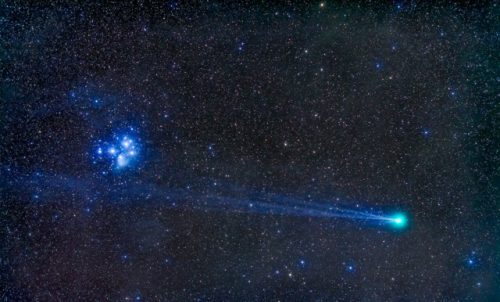
Comet Lovejoy and The Pleiades

🎃👻☠️ Skull Seen In Small Asteroid… Spooky As It Gets! 🎃👻☠️
2015 TB145 - 2000 foot wide asteroid.
🎃 Part Of Spinning Blue Ball’s Five Days of Halloween!! 🎃
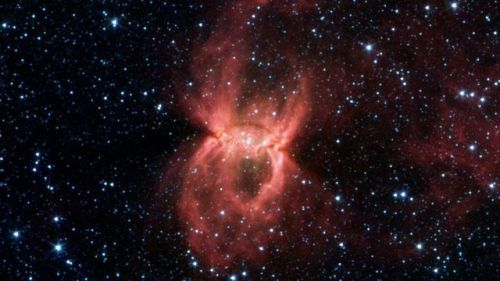
🎃👻🕷️ Black Widow In Space … Black Widow Nebula 🎃👻🕷️
🎃 Part Of Spinning Blue Ball’s Five Days of Halloween!! 🎃

NGC 7129 - Reflection Nebula: 3000LY Away
![Carina Nebula [ 564 X 888]](https://64.media.tumblr.com/12e8e14fcca9b5df73af77419d21078e/tumblr_phe02rajzq1rcl722o1_540.jpg)
Carina nebula [ 564 x 888]

A neutron star located within the remains of a supernova - known as 1E 0102.2-7219 (E0102) - in the Small Magellanic Cloud located 200,000 light years from Earth. [3985 × 6287]
![The Iris Nebula - A Beautiful Reflection Nebula Surrounded By Dust [3000x3000] [OC]](https://64.media.tumblr.com/1880ab9337732f1cb248563279731e38/tumblr_phd5afcPWh1rcl722o1_500.jpg)
The Iris Nebula - a beautiful reflection nebula surrounded by dust [3000x3000] [OC]

NGC 3921, Spirit Galaxy

October is the time of year for the Orionids Meteor Shower! Pictured here, over two dozen meteors were caught in successively added exposures last October in Inner Mongolia. The featured image shows multiple meteor streaks that can all be connected to a single small region on the sky called the radiant, here visible just above and to the left of the belt of Orion. The Orionids meteors started as sand sized bits expelled from Comet Halley during one of its trips to the inner Solar System. Comet Halley is actually responsible for two known meteor showers, the other known as the Eta Aquarids and visible every May.
Next month, the Leonids Meteor Shower from Comet Tempel-Tuttle should also result in some bright meteor streaks.
Image Credit & Copyright: Yin Hao
Interesting facts about stars
Stars are giant, luminous spheres of plasma. There are billions of them — including our own sun — in the Milky Way Galaxy. And there are billions of galaxies in the universe. So far, we have learned that hundreds also have planets orbiting them.
1. Stars are made of the same stuff

All stars begin from clouds of cold molecular hydrogen that gravitationally collapse. As they cloud collapses, it fragments into many pieces that will go on to form individual stars. The material collects into a ball that continues to collapse under its own gravity until it can ignite nuclear fusion at its core. This initial gas was formed during the Big Bang, and is always about 74% hydrogen and 25% helium. Over time, stars convert some of their hydrogen into helium. That’s why our Sun’s ratio is more like 70% hydrogen and 29% helium. But all stars start out with ¾ hydrogen and ¼ helium, with other trace elements.
2. Most stars are red dwarfs

If you could collect all the stars together and put them in piles, the biggest pile, by far, would be the red dwarfs. These are stars with less than 50% the mass of the Sun. Red dwarfs can even be as small as 7.5% the mass of the Sun. Below that point, the star doesn’t have the gravitational pressure to raise the temperature inside its core to begin nuclear fusion. Those are called brown dwarfs, or failed stars. Red dwarfs burn with less than 1/10,000th the energy of the Sun, and can sip away at their fuel for 10 trillion years before running out of hydrogen.
3. Mass = temperature = color

The color of stars can range from red to white to blue. Red is the coolest color; that’s a star with less than 3,500 Kelvin. Stars like our Sun are yellowish white and average around 6,000 Kelvin. The hottest stars are blue, which corresponds to surface temperatures above 12,000 Kelvin. So the temperature and color of a star are connected. Mass defines the temperature of a star. The more mass you have, the larger the star’s core is going to be, and the more nuclear fusion can be done at its core. This means that more energy reaches the surface of the star and increases its temperature. There’s a tricky exception to this: red giants. A typical red giant star can have the mass of our Sun, and would have been a white star all of its life. But as it nears the end of its life it increases in luminosity by a factor of 1000, and so it seems abnormally bright. But a blue giant star is just big, massive and hot.
4. Most stars come in multiples

It might look like all the stars are out there, all by themselves, but many come in pairs. These are binary stars, where two stars orbit a common center of gravity. And there are other systems out there with 3, 4 and even more stars. Just think of the beautiful sunrises you’d experience waking up on a world with 4 stars around it.
5. The biggest stars would engulf Saturn

Speaking of red giants, or in this case, red supergiants, there are some monster stars out there that really make our Sun look small. A familiar red supergiant is the star Betelgeuse in the constellation Orion. It has about 20 times the mass of the Sun, but it’s 1,000 times larger. But that’s nothing. The largest known star is the monster UY Scuti. It is a current and leading candidate for being the largest known star by radius and is also one of the most luminous of its kind. It has an estimated radius of 1,708 solar radii (1.188×109 kilometres; 7.94 astronomical units); thus a volume nearly 5 billion times that of the Sun.
6. There are many, many stars

Quick, how many stars are there in the Milky Way. You might be surprised to know that there are 200-400 billion stars in our galaxy. Each one is a separate island in space, perhaps with planets, and some may even have life.
7. The Sun is the closest star

Okay, this one you should know, but it’s pretty amazing to think that our own Sun, located a mere 150 million km away is average example of all the stars in the Universe. Our own Sun is classified as a G2 yellow dwarf star in the main sequence phase of its life. The Sun has been happily converting hydrogen into helium at its core for 4.5 billion years, and will likely continue doing so for another 7+ billion years. When the Sun runs out of fuel, it will become a red giant, bloating up many times its current size. As it expands, the Sun will consume Mercury, Venus and probably even Earth.
8. The biggest stars die early

Small stars like red dwarfs can live for trillions of years. But hypergiant stars, die early, because they burn their fuel quickly and become supernovae. On average, they live only a few tens of millions of years or less.
9. Failed stars

Brown dwarfs are substellar objects that occupy the mass range between the heaviest gas giant planets and the lightest stars, of approximately 13 to 75–80 Jupiter masses (MJ). Below this range are the sub-brown dwarfs, and above it are the lightest red dwarfs (M9 V). Unlike the stars in the main-sequence, brown dwarfs are not massive enough to sustain nuclear fusion of ordinary hydrogen (1H) to helium in their cores.
10. Sirius: The Brightest Star in the Night Sky

Sirius is a star system and the brightest star in the Earth’s night sky. With a visual apparent magnitude of −1.46, it is almost twice as bright as Canopus, the next brightest star. The system has the Bayer designation Alpha Canis Majoris (α CMa). What the naked eye perceives as a single star is a binary star system, consisting of a white main-sequence star of spectral type A0 or A1, termed Sirius A, and a faint white dwarf companion of spectral type DA2, called Sirius B.
To know more click the links: white dwarf, supernova, +stars, pulsars
sources: wikipedia and universetoday.com
image credits: NASA/JPL, Morgan Keenan, ESO, Philip Park / CC BY-SA 3.0
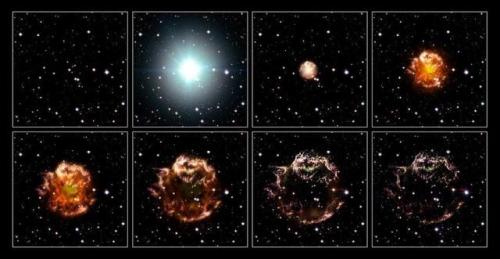
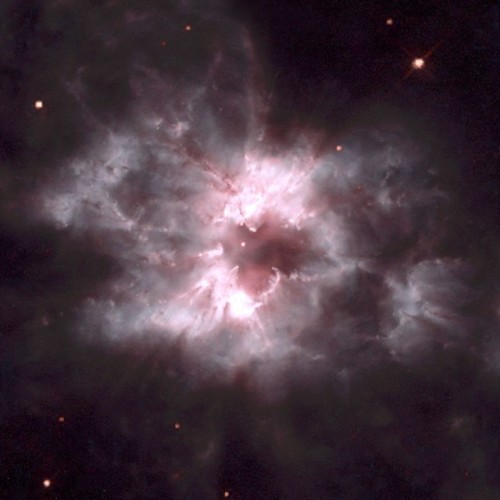
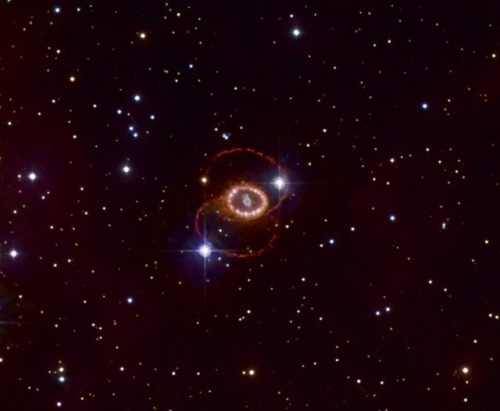

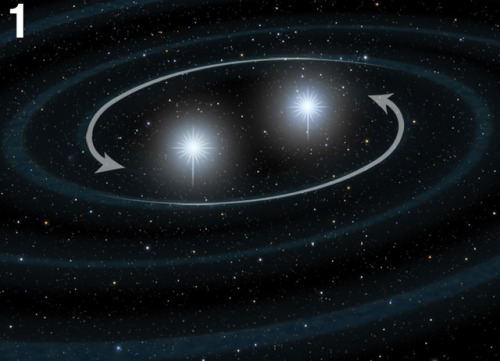
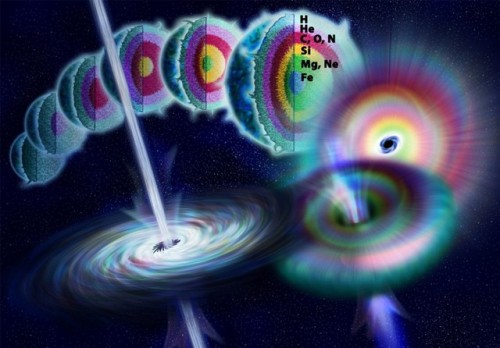
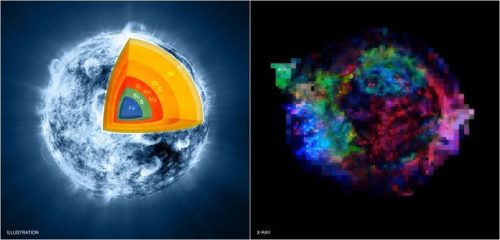
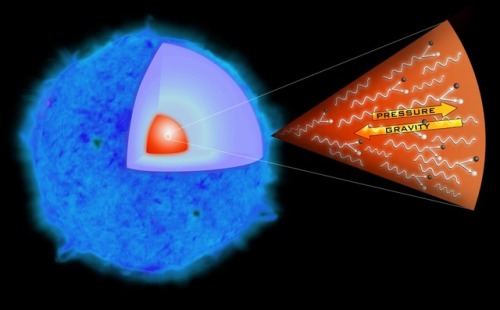
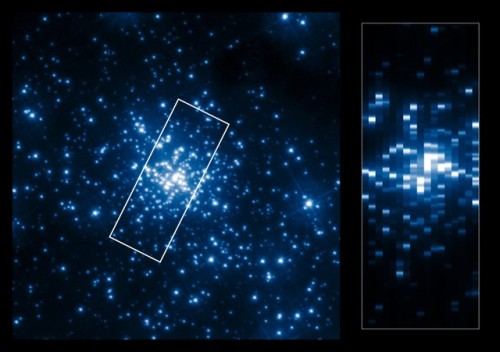

These Are The 6 Different Ways To Make A Supernova
“Yet, if you cross a certain mass threshold, you overcome that quantum barrier, and that triggers a runaway fusion reaction, destroying the white dwarfs and leading to a different class of supernova: a thermal runaway supernova.
So, we’ve got core collapse supernovae and thermal runaway supernovae. Does that mean that there are only two classes?
Hardly. There’s more than one way to make both a thermal runaway and a core collapse supernova, and each mechanism or method has properties that are wholly unique to it. Here are the six ways to make a supernova, starting with the least-massive trigger and going up from there.”
So, you’ve got a star, and you want to trigger a supernova with it? Great! Every star that ever gets made in the Universe has the possibility of going supernova. If your star is born with more than about 8 solar masses, it’s practically an inevitability that a supernova will ensue, and that it will be a core-collapse supernova at that. But there are four independent ways to make that happen, and only one of them is the conventional way you probably think about it. If your star has less than 8 solar masses, though, it ends its life in a white dwarf, but that’s not necessarily the end. White dwarfs can gain enough mass, through two different known mechanisms, to someday go supernova as well.
There are six different ways to make a supernova, and each one is spectacular. Which one is your favorite?

The Aurora and the Sunrise : Auroras are one of the many Earthly phenomena the crew of the International Space Station observe from their perch high above the planet. (via NASA)

Comet Lovejoy (C/2014 Q2) streaming through the pale neon sky over Paranal on 20 January 2015. The Pleiades, a tight bundle of electric blue, also appear in the direction of Lovejoy’s tail.
Credit: ESO/G. Hüdepohl (atacamaphoto.com)

R Leporis: A Vampire’s Star via NASA https://ift.tt/2Rt7kU7


Comet McNaught next to the dome of the NTT on La Silla. The picture was taken in January 2007.
Credit: ESO/H.H.Heyer

Elliptical Galaxy NGC 4696
read more at APOD/NASA; credit: NASA, ESA, Hubble, A. Fabian

NGC 6960: The Witchs Broom Nebula : Ten thousand years ago, before the dawn of recorded human history, a new light would have suddenly have appeared in the night sky and faded after a few weeks. Today we know this light was from a supernova, or exploding star, and record the expanding debris cloud as the Veil Nebula, a supernova remnant. This sharp telescopic view is centered on a western segment of the Veil Nebula cataloged as NGC 6960 but less formally known as the Witch’s Broom Nebula. Blasted out in the cataclysmic explosion, the interstellar shock wave plows through space sweeping up and exciting interstellar material. Imaged with narrow band filters, the glowing filaments are like long ripples in a sheet seen almost edge on, remarkably well separated into atomic hydrogen (red) and oxygen (blue-green) gas. The complete supernova remnant lies about 1400 light-years away towards the constellation Cygnus. This Witch’s Broom actually spans about 35 light-years. The bright star in the frame is 52 Cygni, visible with the unaided eye from a dark location but unrelated to the ancient supernova remnant. via NASA
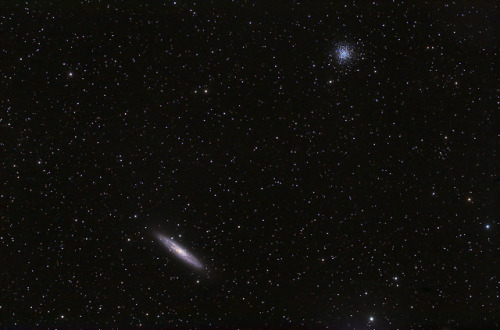
Spiral Galaxy NGC253 and Globular Cluster NGC288
by Eddie Trimarchi




‘That was a quick flight’: How astronauts kept ice cool while their rocket malfunctioned at 4,970mph and plummeted back to Earth in harrowing 7G 'ballistic re-entry’ before hugging their loved-ones on the landing pad as Russia opens CRIMINAL probe.
Two astronauts kept ice cool as their rocket traveling at thousands of miles an hour malfunctioned on the edge of space while carrying them to the International Space Station, cockpit audio reveals.
Russian Aleksey Ovchinin and American Nick Hague made it back to Earth alive this morning after the booster on their Soyuz rocket broke at 164,000 feet and the rocket automatically turned back during a dramatic 7G 'ballistic re-entry’.
Ovchinin retained an enviable sang-froid as he realised what was happening, after they were rocked violently around in their seats by the force of the booster malfunction.
'An accident with the booster, 2 minutes, 45 seconds. That was a quick flight,’ he said in a calm voice in a streamed video of the incident.
'We’re tightening our seatbelts,’ Ovchinin said on the video.
At that moment the two astronauts were experiencing weightlessness, when in an ordinary launch they should still have been pinned to the back of their seats by the force of the rocket surging upwards at 4,970mph.
Russia says it has opened a criminal investigation and grounded all Soyuz flights. The accident comes weeks after a hole was discovered in the International Space Station amid talk from the Russian space authorities of deliberate sabotage.
Video footage from the launch at the Baikonur Cosmodrome shows a large plume of smoke coming from the rocket at the moment it failed and footage from inside the capsule shows the two astronauts being violently shaken about.
The accident bears similarities to the 1986 Challenger disaster when one of its boosters failed at lift-off causing an explosion that killed seven.
Astronauts have been involved in Soyuz malfunctions twice before, one in 1983 when a crew was forced to eject from a Soyuz rocket as it exploded on the launchpad. In 1975 a Soyuz capsule crashed back to Earth from 90 miles up after a rocket failure, but the crew survived.
The rocket, which was designed in the 1960s, has also had one booster fail in similar fashion to today’s malfunction. In 2002 a booster rocket malfunctioned and the rocket which was carrying a satellite crashed in Kazakhstan killing one person on the ground.
In total Soyuz rockets have been launched 745 times of which 21 have failed. Thirteen of those failures have been since 2010, calling into question the continued reliability of the rocket.
Search and rescue teams were scrambled to the touchdown location as NASA revealed the descent meant the Russian-built Soyuz MS-10 spacecraft had to take 'a sharper angle of landing compared to normal’.
The Russians have suspended Soyuz flights to the space station while they investigate the cause of the booster failure.
The Soyuz is the only way to get people to the space station at the moment but officials insist the astronauts currently on the space station have enough supplies.
NASA rookie Nick Hague and second-time flyer Aleksey Ovchinin of the Russian space agency were setting off for a six-month mission at the International Space Station Thursday, on a relatively rare two-man launch.
A spokesperson for NASA said that rescue teams have now reached Hague and Ovchinin and they’ve been taken out of the capsule and were in 'good condition’.
The craft’s landing engines and parachute system were said to have done their job as normal despite the enormous G-force acting on both the shuttle and crew during the landing.
Shortly after the incident rescue crews and paratroopers were rushed the emergency landing site in the barren Kazakh steppe to provide support for the crew.
NASA had issued a worrying tweet on Thursday morning saying: 'There’s been an issue with the booster from today’s launch. Teams have been in contact with the crew.’
'The capsule is returning via a ballistic descent, which is a sharper angle of landing compared to normal. Search and rescue teams are heading towards the expected touchdown location of the spacecraft and crew.’
Cosmonaut Alexander Volkov commented: 'The guys are lucky that they remained alive. They had reached a good height so it was possible to descend in their capsule.’
More info, pictures, diagrams, videos at this link: https://www.dailymail.co.uk/news/article-6264339/Rocket-launch-booster-malfunction-forces-astronauts-return-Earth-ballistic-entry.html








Starry Greetings!
Seems like Planet X wanted to finish off Halloween with one… last…story…
https://cosmosmagazine.com/physics/vacuum-decay-ultimate-catastrophe
https://www.youtube.com/watch?v=ijFm6DxNVyI
http://io9.gizmodo.com/we-might-be-destroying-the-universe-just-by-looking-at-1514652112










SpaceTime 20181010 Series 21 Episode 80 is now out
SpaceTime covers the latest news in astronomy & space sciences.
The show is available as a free twice weekly podcast through Apple Podcasts (itunes), Stitcher, Google Podcast, Pocketcasts, SoundCloud, Bitez.com, YouTube, Audio Boom, your favourite podcast download provider, and from www.spacetimewithstuartgary.com
SpaceTime is also broadcast coast to coast across the United States on Science360 Radio by the National Science Foundation in Washington D.C. and around the world on Tune-In Radio.
SpaceTime daily news blog: http://spacetimewithstuartgary.tumblr.com/ SpaceTime facebook: www.facebook.com/spacetimewithstuartgary SpaceTime Instagram @spacetimewithstuartgary SpaceTime twitter feed @stuartgary SpaceTime YouTube: https://www.youtube.com/c/SpaceTimewithStuartGary
Today’s stories…
Another lander touches down on the asteroid Ryugu Japan’s Hyabusa2 spacecraft has successfully deployed a third lander rover onto the rugged boulder strewn surface of the asteroid Ryugu – located some 300 million kilometres from Earth.
New Neutron Star discovery challenges existing theories Existing theories about Neutron stars have taken a blow with astronomers detecting radio jets emanating from a neutron star with a strong magnetic field.
New sub-atomic particles discovered at the super collider Physicists have discovered two new sub atomic particles with hints of a possible third.
Intergalactic stars flying towards the Milky Way Astronomers have discovered dozens of stars flying through intergalactic space heading towards the Milky Way Galaxy.
The Science Report Russia widely condemned over a series of cyber-security attacks. Users demanding higher purity types of ecstasy, crystal methamphetamine, and cocaine. Australia records its driest September on record. Wireless broadband connections the most popular means of accessing the Internet. Alex on tech Prince Charles gives the thumbs down to artificial intelligence.
Last Saturday’s show….
Opportunity still silent Scientists are increasing the frequency of commands being sent to the still silent Opportunity Mars rover on the surface of the red planet.
Neutrino experiment records its first tracks The world’s largest liquid-argon neutrino detector has just recorded its first particle tracks.
One hundredth Ariane 5 launch Arianespace has successfully carried out its 100th Ariane 5 launch.
October Skywatch A busy month with three meteor showers in October–the Draconids, the Taurids and the Orionids.
The Science Report A new class of antibiotics to combat the growing problem of deadly multi-drug resistant bacteria. New solar flow battery that both soaks up sunlight and store it as chemical energy for later use. How bombing air raids during World War Two affected the ionosphere. Warnings that industries dominated by the opposite sex tend to have higher rates of divorce.
SpaceTime Background SpaceTime is Australia’s most respected astronomy and space science news program. The show reports on the latest stories and discoveries making news in astronomy, astrophysics, cosmology, planetary science, galactic and stellar evolution, physics, spaceflight, and general science. SpaceTime features interviews with leading Australian scientists about their latest research. The show is broadcast coast to coast across the United States by the National Science Foundation on Science360 Radio and around the world on Tune in Radio. SpaceTime is available in Australia as a twice weekly podcast which averages around three million downloads annually. It’s hosted on line through Bitez.com on all major podcast platforms. SpaceTime began life in 1995 as ‘StarStuff’ on ABC NewsRadio. Stuart Gary created the show while he was NewsRadio’s Science Editor and evening News anchor. Gary wrote, produced and hosted the program, consistently achieving 9 percent of the Australian radio audience share - according to Neilsen ratings survey figures for the five major Australian metro markets (Sydney, Melbourne, Brisbane, Adelaide, & Perth). The StarStuff podcast was hosted by ABC Science on line achieving over 1.3 million downloads annually. Sadly, the popular program was axed in 2015 during ABC budget cuts. Rather than remain with the ABC, Gary resigned to continue producing the show independently and rebranding it as SpaceTime. The first episode of SpaceTime was broadcast on February 8th 2016 and the show has been in continuous production ever since. SpaceTime now reaches an audience almost three times greater that it achieved as StarStuff and continues to grow.










These 5 Women Deserved, And Were Unjustly Denied, A Nobel Prize In Physics
“The fact of the matter is that there is no concrete evidence that women are in any way inherently inferior to men when it comes to work in any of the sciences or any of their sub-fields. But there is overwhelming evidence for misogyny, sexism, and institutional bias that hinders their careers and fails to recognize them for their outstanding achievements. When you think of the Nobel Laureates in Physics and wonder why there are so few women, make sure you remember Cecilia Payne, Chien-Shiung Wu, Vera Rubin, Jocelyn Bell-Burnell, and Lise Meitner. The Nobel committee may have forgotten or overlooked their contributions until it was too late, but that doesn’t mean we have to. In all the sciences, we want the best, brightest, most capable, and hardest workers this world has to offer. Looking back on history with accurate eyes only serves to demonstrate how valuable, and yet undervalued, women in science have been.”
In most intellectual lines of work, if you claimed that a certain type of person wasn’t mentally capable of doing as good a job as another, you’d be rightfully called a bigot. Yet somehow, in a myriad of the sciences (such as physics), there are those who simultaneously claim that “women are inferior to men” alongside the claim that it isn’t sexist or bigoted to say so.
But what there is a long history of, in physics, is women being denied their due credit for discoveries and advances that they were an integral part of. Even in the aftermath of last week’s events, when physicist Donna Strickland became just the third woman ever to be awarded a Nobel Prize, many have claimed that she isn’t worthy, for reasons that have never been applied to men.
Well, meet five women you might not be aware of who certainly earned a Nobel Prize, even if they were never awarded one. We cannot rewrite history, but we can right the legacy of its wrongs in our public consciousness.
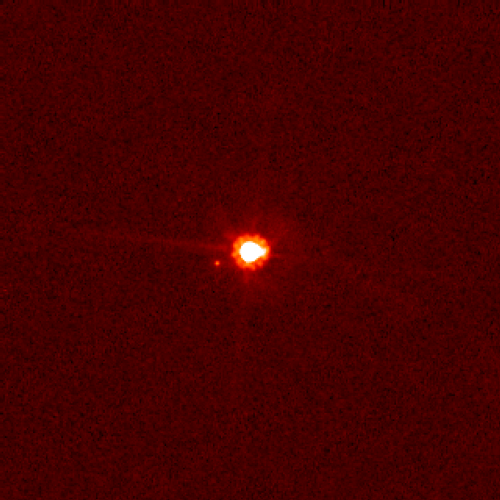
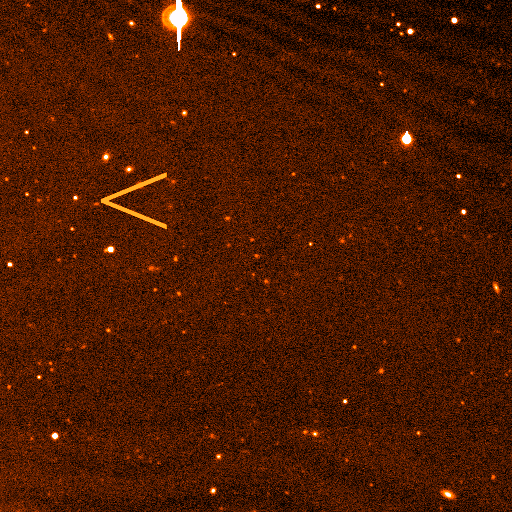
Eris is the most massive and second-largest dwarf planet in the known Solar System. Eris was discovered in January 2005 by a Palomar Observatory-based team led by Mike Brown, and its identity was verified later that year. In September 2006 it was named after Eris, the Greek goddess of strife and discord. Eris is the ninth most massive object directly orbiting the Sun, and the 16th most massive overall, because seven moons are more massive than all known dwarf planets.
Eris is a trans-Neptunian object (TNO) and a member of a high-eccentricity population known as the scattered disk. It has one known moon, Dysnomia. (Eris and Dysnomia are seen in the first image).
source